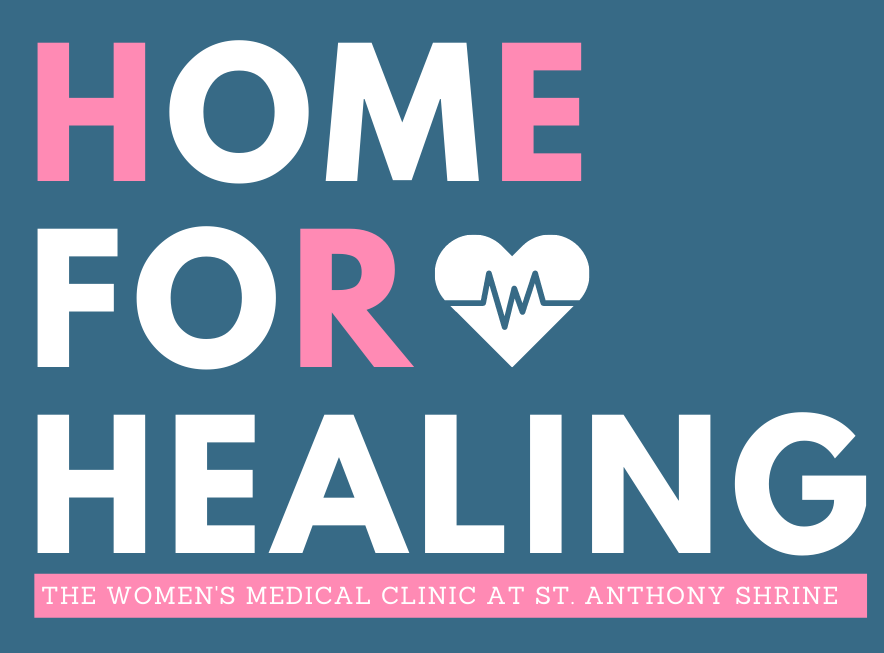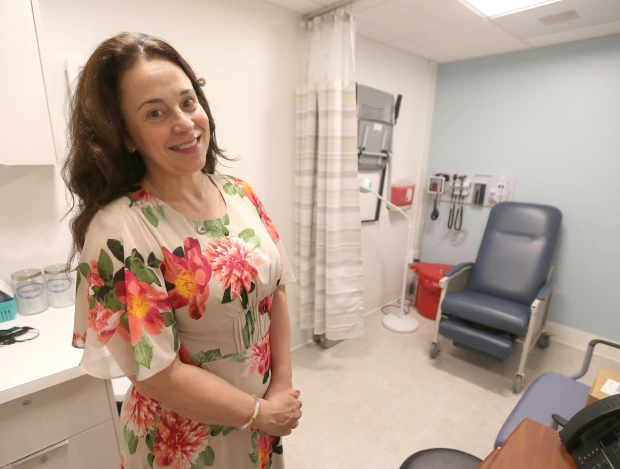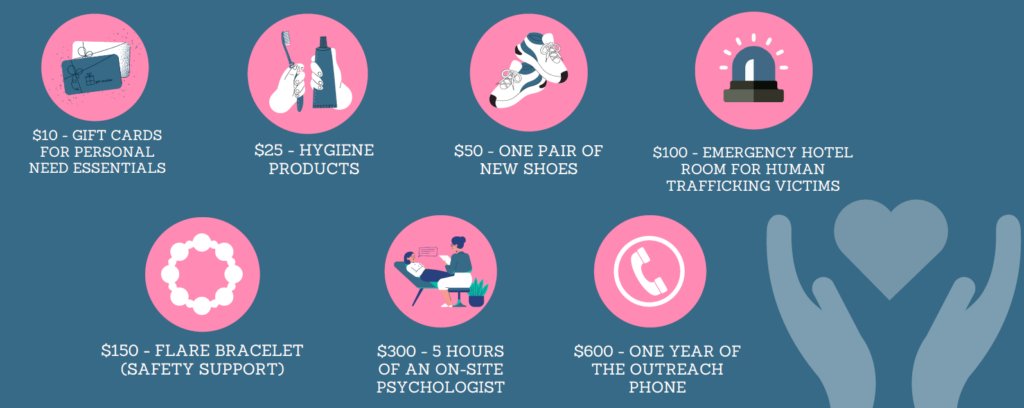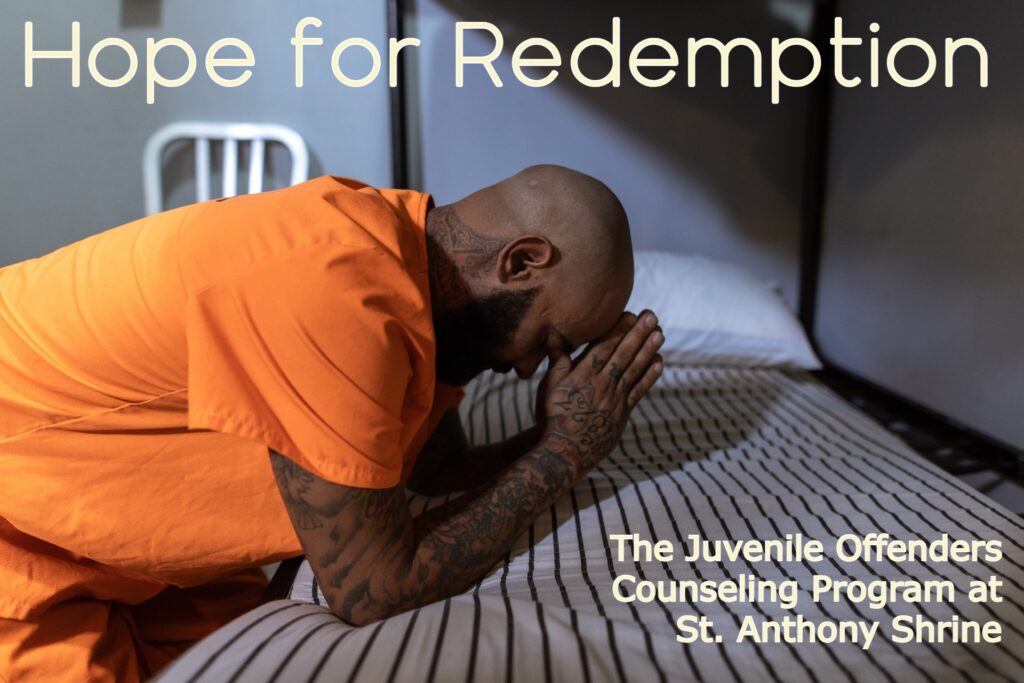Nonprofit Comm Students Help Shrine Shine
By Molly Loughman
It may be another church on another city block to some — but to others, it’s a concrete safe haven, a beacon of hope amid torrid times. St. Anthony Shrine, a Franciscan Catholic community at 100 Arch Street in Boston, has been offering vital assistance to Bostonians in need since 1947.
In 2022, it is raising tens of thousands of dollars for several causes, thanks in part to the work produced last spring by students in Cathy Edelstein’s Nonprofit Fundraising Campaigns class.
“As community members… it is our responsibility to support projects that promote social justice and bring equitable resources to those whom we can help,” says Edelstein, Communication Studies department Senior-Executive-in-Residence, who guided students throughout their civic engagement.
These days, the Shrine’s $5 million operation is devoted to, among dozens of other programs year-round, helping local city dwellers confront homelessness and substance use disorder, seek parole after decades in prison, and build an inclusive Catholic community.
This spring, the Shrine enlisted the help of Emerson’s Professor Cathryn Edelstein’s Nonprofit Communication students to create digital marketing material for these four crowdfunding campaigns. Students toured Shrine facilities and met with staff.
Communicating the Cause

A woman has just left a domestic violence situation with four children and nowhere to go. This is one of many situations the Shrine responds to, after being called by the Boston Police Department.
“We find a way to help them. We’ll put [DV survivors] in a hotel overnight. We’ll bring them to the correct social services where they can get a more permanent situation set up,” said Friar Tom Conway, Executive Director of the Shrine. “It’s a very Franciscan thing to get to know people and their stories, and to try to take them from where they are in their story and into a better spot.”
Students produced infographics, a short video, and messaging that aimed to bring awareness and public and private donations to four social services programs under the Shrine. Their first project was the Rita A. DiMento Women’s Clinic, serving some of Downtown’s most vulnerable: women escaping assault, abuse, prostitution, and sex trafficking.

In partnership with Boston Health Care for the Homeless Program, the Women’s Clinic offers a calming, confidential, and private environment. The clinic includes brand new bathrooms/showers, and professional staff, a nurse practitioner, registered nurse, and a licensed drug and alcohol counselor.
Anna Merola ’23 helped write messaging statements for the crowdfunding campaign to appeal to the public and provide awareness of the Juvenile Offenders Program, and also helped produce the video used along with it.
![Gathered behind an opened computers in front of a giant screen projector of people Zooming in, Emerson Students (L-R) Michael Rubenstein, Olivia Rettew, Hanna Qiu, Morgan Reinbold virtually presenting their campaign materials to stakeholders at St. Anthony Shrine. [Courtesy Photo]](https://today.emerson.edu/wp-content/uploads/2022/11/IMG_0849-2-993x1024.jpeg)
“Being a part of the team that was able to actually help and provide information and the tools for St. Anthony Shrine to succeed in this endeavor is something I will cherish for a long time,” said Merola, who was also a part of Edelstein’s ‘On the Same Page’ online diverse book campaign for Boston Public Schools last spring. “It showed me the time and effort it takes to make a campaign successful.”
At the end of spring semester, students presented their campaign materials to 12 administrative directors of the Shrine’s programs and development team, along with Fr. Tom.
The Shrine used the materials when they rolled out the crowdfunding initiatives. The first week-long campaign was titled by the students Women’s Clinic “Home for Healing,” and ran from August 1-7, with a $12,000 goal. The campaign raised over $40,000.

“It’s huge. We had a goal thermometer on our whiteboard and we just went way past it,” Cathy Paolozzi, Shrine Director of Development Marketing and Operations, said. “We had not done a lot of email or crowdfunding, so this was a bit of breaking ground for us emailing donors. We had momentum throughout the week… We had people hand delivering gifts. People were really engaged around it.”
Digital crowdfunding may be a relatively new tactic in the field of nonprofit work, but the concept of engagement is still to tell the story, explained Paolozzi. Email engagement for the Shrine was exceptionally high with the Women’s Clinic campaign. “I think being able to pull together that information, tell those stories — which the students did beautifully — is a core part of fundraising. They pulled together all the elements and created great campaigns. I certainly welcome more collaborations with them in the future.”

The second campaign, the Juvenile Offenders Program, ran September 19-25, raising $11,000. “Sitting down and hearing what the Shrine wanted to do with the Juvenile Offenders program and what steps they are taking to help these men was something I had never heard of before,” says Merola.


The last two campaigns – “Rainbow Remembrance Honoring World AIDS Day” and “Open Arms Boston – Bridging the Homeless Gap” are slated to run in November and in the spring of 2023.
“I’m glad there’s a class on Nonprofit Communication because so many people land on it by accident, as a second career,” says Paolozzi. “[At Emerson], students have the opportunity to think about it as an early career option.”
Categories
![St. Anthony Shrine homeless outreach on Boston Common. [Photo/Julianne Gauron]](https://today.emerson.edu/wp-content/uploads/2022/11/Outreach-3-1-2-1024x684.jpg)
![AIDS Memorial Quilt at St. Anthony Shrine [Photo/Julianne Gauron]](https://today.emerson.edu/wp-content/uploads/2022/11/LGBTQ-1-1-1024x731.jpg)
![World AIDS Day Memorial Mass at St. Anthony Shrine.[Photo/Julianne Gauron]](https://today.emerson.edu/wp-content/uploads/2022/11/LGBTQ-3-2-1024x731.jpg)
![World AIDS Day Memorial Mass at St. Anthony Shrine, Fr. Jay Woods, OFM.[Photo/Julianne Gauron]](https://today.emerson.edu/wp-content/uploads/2022/11/LGBTQ-2-2-1024x731.jpg)